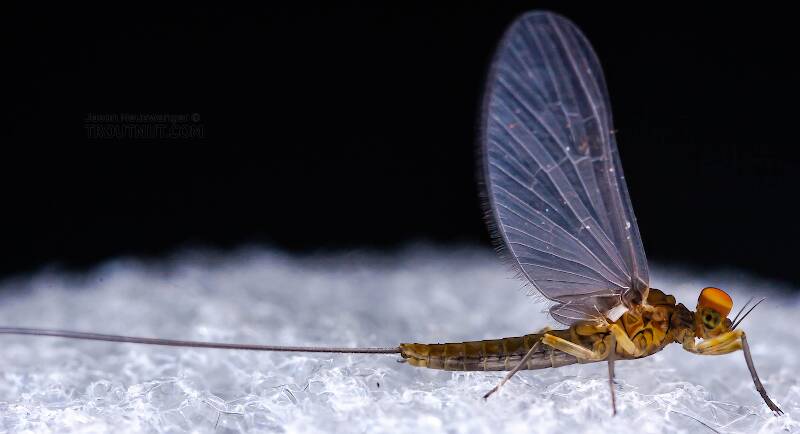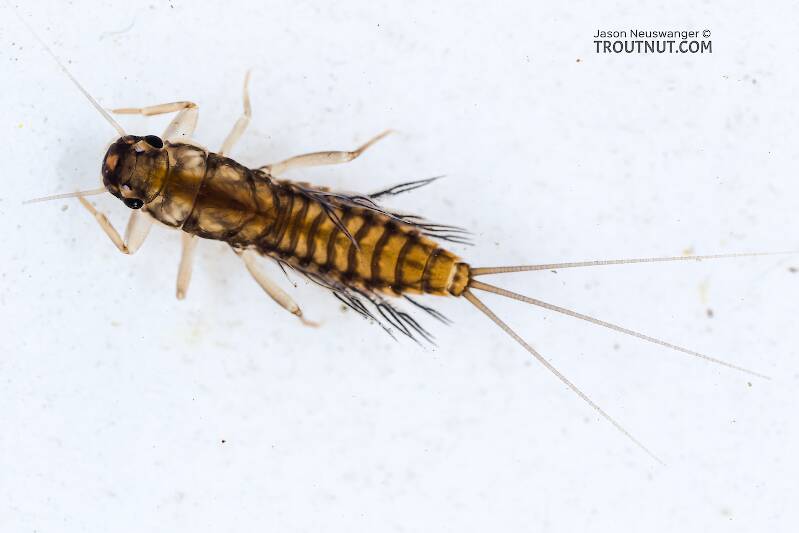
Blue-winged Olives
Baetis
Tiny Baetis mayflies are perhaps the most commonly encountered and imitated by anglers on all American trout streams due to their great abundance, widespread distribution, and trout-friendly emergence habits.
Featured on the forum

Some characteristics from the microscope images for the tentative species id: The postero-lateral projections are found only on segment 9, not segment 8. Based on the key in Jacobus et al. (2014), it appears to key to Neoleptophlebia adoptiva or Neoleptophlebia heteronea, same as this specimen with pretty different abdominal markings. However, distinguishing between those calls for comparing the lengths of the second and third segment of the labial palp, and this one (like the other one) only seems to have two segments. So I'm stuck on them both. It's likely that the fact that they're immature nymphs stymies identification in some important way.

Troutnut is a project started in 2003 by salmonid ecologist Jason "Troutnut" Neuswanger to help anglers and
fly tyers unabashedly embrace the entomological side of the sport. Learn more about Troutnut or
support the project for an enhanced experience here.
Troutnut.com User Waxsmith (A.K.)
Troutnut.com User Waxsmith (A.K.)
Real Name
A.K.
Location
CANADA
Homepage
Biography & Thoughts
Where I live in Canada the only trout there are no native trout other than Lake Trout. We do now, however have some smaller streams and many small lakes stocked for many years already with Brookies as well as Rainbow and Brown trout.To make for a little diversity there are many lakes in this land with Lake Whitefish which can be lots of challenge and fun when hexagania are hatching.Two or three of our large rivers also without trout do hold Goldeyes which are at times madly after Mayfly type of insects mostly in late summer and early autumn. Hey, there is also the odd pike to be caught and eaten I might add;Woolly Bu.... quite often do them in around here(elsewhere probably too). Since in Nov. everything watery freezes up around here there is still the option to catch Jacks (as pike are called around here) through the ice, modified Flashtail Whistlers are quite useful for that purpose. That's it for now. Greetings, Waxsmith.
Forum Signature
What is this supposed to look like, example please.
Send Waxsmith a Private Message
Latest Posts By Waxsmith
Topic
Replies
Last Reply

